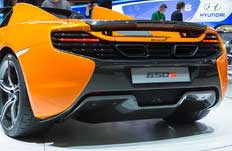The automobile industry has seen terrific change since the first car hit the road back in 1886. In fact, a quick comparison between the first car and today’s cars will tell you there are simply too many alterations to mention. Engines have developed out of all recognition, the bodywork has changed and a car’s interior is dramatically different too. Changes in fuels used, catalytic converters, turbos and injected engines have all been introduced. Big cars, small cars, cadillacs, two seaters, sports’ cars and Formula One cars. It’s an industry reluctant to stand still.
One of the major developments in recent times has been the introduction of the hybrid car – a vehicle that usually has two tanks for fuel – one for petrol and the other for hydrogen/ethanol or an alternative renewable fuel. Another step in the right direction. Another topic of conversation.
However, the industry was never likely to sit still after that, was it? The latest innovation sees the first ever self cleaning car.











Recent Comments